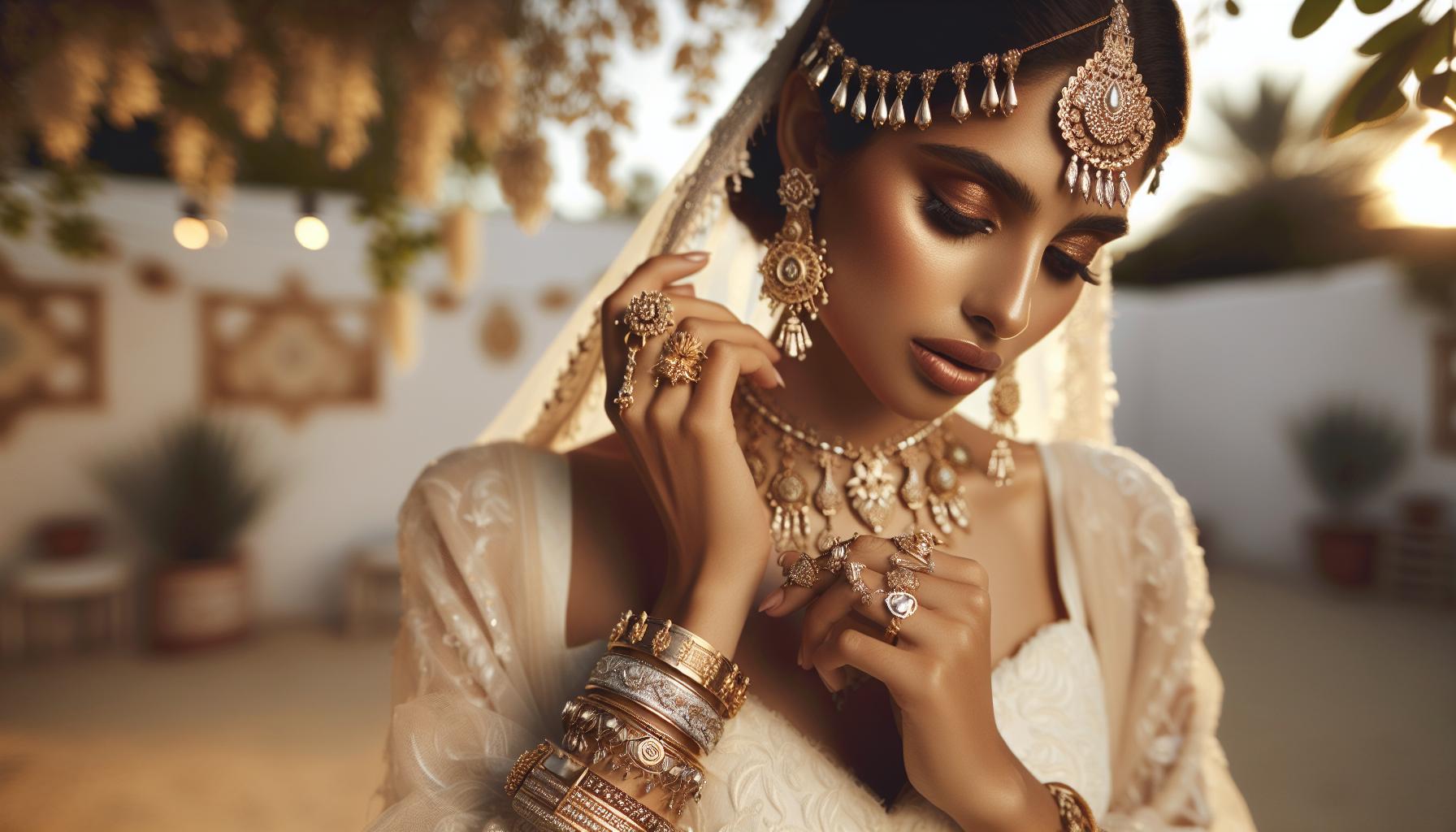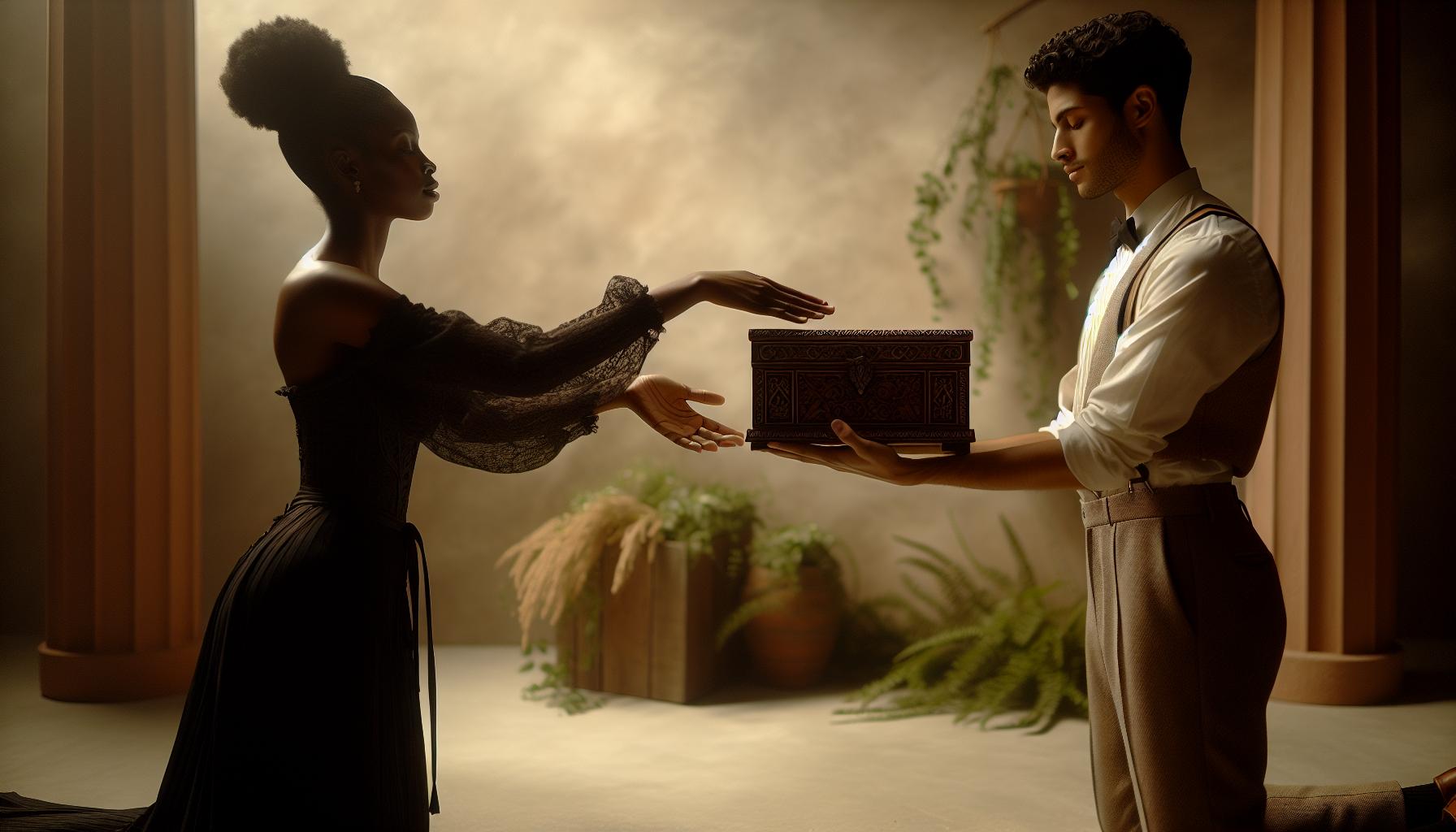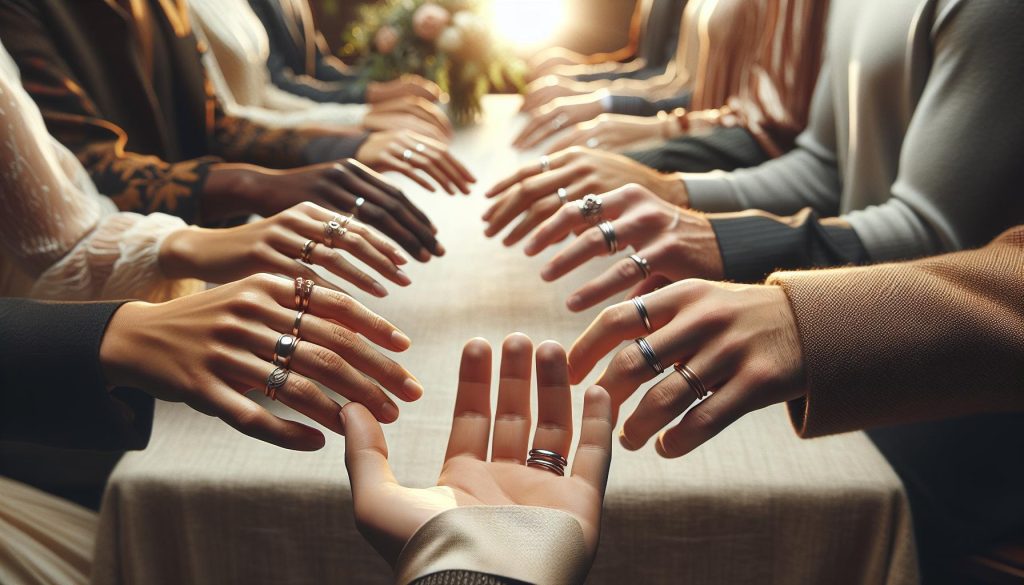Choosing the right hand to wear your wedding ring is more than just a personal preference-it’s steeped in tradition and meaning that can vary across cultures. Understanding these customs not only enriches your wedding journey but also connects you to the rich tapestry of love stories that have come before. Many couples wonder which hand to choose, reflecting on the symbolism associated with their decision. Should you follow family tradition, or embrace a modern twist? In this complete guide, we’ll explore the significance behind wearing your wedding ring on different hands, ensuring you make a choice that reflects your unique love story. Dive in to discover expert insights and thoughtful tips that will help you confidently navigate this meaningful aspect of your wedding planning.
What Does Your Wedding Ring Hand Symbolize?
The hand on which one chooses to wear a wedding ring carries deep significance and can reflect personal beliefs, cultural traditions, and individual values. Historically, the left hand has been viewed by many cultures as the preferred choice for wearing wedding rings, symbolizing a connection to the heart and romantic love. This belief can be traced back to ancient times, with the notion that a vein, often referred to as the “vena amoris” or vein of love, runs directly from the left ring finger to the heart. This heartfelt symbolism continues to inspire couples today, representing a bond that is intimate and profound.
In contrast, the right hand has gained popularity in various regions and among different cultures. For instance, some Eastern European and South American countries traditionally see wedding rings worn on the right hand, where it may symbolize strength and fidelity. This shift in placement often marks a distinctly personal choice, allowing couples to align their ring-wearing practice with their cultural or familial values, or even to express their identities uniquely.
Ultimately, the choice of which hand to adorn with a wedding ring should resonate with the couple’s story and preferences. Whether adhering to long-standing traditions or embracing modern practices, the symbolism behind the ring and its placement reflects the commitment and love shared between partners. As couples navigate their wedding planning journey, they should feel encouraged to select the tradition that resonates most deeply with them, celebrating their love in a way that feels right-for both individuals and their unique journey together.
Traditional Choices: Left Hand vs. Right Hand
Choosing which hand to wear your wedding ring on is a deeply personal decision, entwined with cultural significance and individual beliefs. The traditional choice for many is the left hand, a practice rooted in the notion that this finger is directly connected to the heart, often referred to as the “vena amoris” or vein of love. This association has inspired generations to adorn the left ring finger as a declaration of romantic commitment, making it a symbol of heartfelt devotion that continues to resonate with couples today.
However, it is essential to recognize the validity and richness of wearing wedding rings on the right hand, a practice embraced in various cultures. In many Eastern European and South American countries, the right hand is favored, symbolizing strength, fidelity, and often a more assertive declaration of love. Choosing the right hand can reflect a couple’s desire to connect with their heritage or to make a bold statement about their relationship. This divergence in traditions highlights a crucial aspect of wedding planning: the importance of aligning personal choices with individual values and narratives.
As couples navigate through these decisions, it can be beneficial to discuss the symbolism in their families or communities, exploring the meanings that resonate most strongly with them. Whether the couple opts to follow traditional practices or embrace more contemporary interpretations, the ring’s placement should be a harmonious blend of love, commitment, and personal identity. After all, the wedding ring is not just a piece of jewelry; it serves as a lifelong reminder of the promises made and the journey shared, encapsulating the essence of the couple’s unique love story.
Cultural Variations in Ring Placement
Cultural practices surrounding wedding ring placement are as varied as the couples they symbolize, each reflecting unique values and traditions. While many people associate wedding rings with the left hand, numerous cultures adopt different practices that convey equally profound meanings. Understanding these customs not only enriches couples’ appreciation of their rings but also allows them to celebrate their diverse backgrounds.
In many European countries, such as Germany and Austria, couples often wear their wedding bands on the left hand during the ceremony and switch to the right hand afterward. This transition represents a formal union, with the left hand signifying the commitment made during the wedding vows. Similarly, in Hindu culture, it’s customary for the bride to wear her wedding ring on the toe, reflecting a spiritual connection to her husband and the family she is joining.
Eastern European traditions frequently favor the right hand for wedding rings. Here, the right hand symbolizes strength and loyalty, embodying a couple’s love and the bond they share. Countries such as Poland and Russia maintain this practice, associating the right hand with a more public dedication to one another. In contrast, some South American cultures also prefer the right hand, viewing it as a clear and definitive statement of partnership.
When embracing these cultural variations, couples should consider what resonates most with their personal beliefs and family traditions. Choosing to wear a wedding ring on a specific hand can be a beautiful means of honoring heritage while creating a unique narrative for the couple’s journey. It encourages engaging discussions with loved ones, fostering connections and realigning traditions that bring shared joy and significance.
In this diverse tapestry of wedding customs, it becomes evident that the meaning behind a wedding ring’s placement transcends mere tradition; it embodies the couple’s commitment to one another, forever intertwining their stories in a symbol of love that honors both the past and the present.
When to Switch Hands: Meaning and Customs
Deciding when to switch hands with your wedding ring can be as meaningful as the vows exchanged during your wedding ceremony. For many couples, this transition marks significant stages in their relationship, encapsulating personal beliefs, cultural practices, or simply a practical choice based on lifestyle. Understanding the reasons and traditions behind switching your wedding ring can enrich the symbolism of your marital commitment.
In some cultures, the engagement ring is worn on the third finger of the left hand during the engagement period, and it is customary to move it to the right hand after the wedding ceremony. This act often signifies that the commitment is now publicly declared, especially in traditions where the right hand symbolizes strength and loyalty. For instance, in certain Eastern European countries, wearing the wedding band on the right hand represents an outward display of the couple’s commitment to one another. This transition can be a beautiful way to acknowledge the evolution of your relationship, shifting from private promise to a public declaration of love.
Switching hands also offers an opportunity for couples to think about the practicality of their rings. If one hand is more commonly used in daily activities, such as the dominant hand for right-handed individuals, wearing the ring on the opposite hand may help preserve its condition. This consideration can also play a part in the couple’s unique story, providing a reason to subtly alter tradition to suit their lifestyle and preferences.
Regardless of when or why you choose to switch hands, it’s essential to have open discussions with your partner about what feels right for both of you. Embracing both personal and cultural meanings can create a deeper connection to your wedding rings, making the decision about which hand to wear them on a delightful part of your celebration journey together. Ultimately, whether you choose to stick to tradition or forge your own path, the significance lies in the love and commitment that the rings represent, seamlessly woven into the fabric of your lives both now and in the years to come.
Best Practices for Wearing Your Wedding Ring
Wearing your wedding ring is not just about aesthetics; it’s a personal tradition that symbolizes the love and commitment shared with your partner. Here are some best practices to honor this special piece of jewelry while ensuring it remains a source of joy throughout your marriage.
To begin with, it’s essential to choose the correct finger. In many cultures, the tradition is to wear the wedding ring on the third finger of the left hand, where it is believed a vein runs directly to the heart. However, if you prefer to wear it on the right hand, perhaps due to cultural significance or personal preference, remember that the meaning is what truly counts. Establishing a habit of wearing your ring consistently can strengthen the bond it represents, reminding both you and others of your commitment.
Practical Considerations
Fit and Comfort: Ensure your ring fits comfortably. A well-fitted ring allows for easy wear during daily activities without the risk of it slipping off or causing discomfort. If you experience weight fluctuations or swelling, consider visiting a jeweler for resizing.
Daily Care: Everyday activities can impact the condition of your wedding ring. To preserve its lustrous appearance, remove your ring during chores, while exercising, or when using harsh chemicals. Regular cleaning with mild soap and warm water can help maintain its shine, along with occasional professional cleanings.
Style Coordination: While your wedding ring is a standout piece, consider how it complements your style and other accessories. Whether you prefer a stack of rings or a single statement piece, find a balance that mirrors your personality without overshadowing the special meaning of your wedding ring.
Community and Shared Rituals
Engage in shared rituals that honor your commitment, such as a yearly cleaning or a special date night where you showcase your rings together. Regularly discussing the significance of the rings in your relationship can elevate their sentimental value, reminding you both of your journey together.
Ultimately, the revolve around your choices and lifestyle. Celebrate the way you choose to honor your love story, and allow your wedding ring to serve as a beautiful reminder of the vows you’ve exchanged. Each moment you wear it is an opportunity to express your commitment and love, making every day an occasion worth celebrating.
The Impact of Engagement Rings on Placement
The choice of where to wear your engagement ring significantly influences how you experience the symbolism of your wedding ring, weaving the two pieces of jewelry into a cohesive narrative of love and commitment. Traditionally, the engagement ring is worn on the same finger, typically the fourth finger of the left hand, which then creates a natural transition to introducing the wedding ring during the ceremony. This sequential adornment, where the wedding band is placed directly on top of the engagement ring, not only showcases the wedding band’s arrival in a heartfelt moment but also highlights the love story that led to this new chapter.
When considering , it’s essential to appreciate how this pairing transforms the significance of each piece. The engagement ring, often more elaborate and ornate, represents the promise made, while the wedding ring signifies the formal commitment. The act of placing the simpler band over the engagement ring serves as a powerful reminder of the vows exchanged. Think of it as layering your love; each ring symbolizes a different part of your journey together.
Another aspect to consider is the personal touch in styling your rings. Couples may choose to wear their engagement ring on a different hand than their wedding ring-often the right hand-after the ceremony, especially if they prefer to display their wedding band alone, or if local customs dictate such practices. This flexibility in ring placement ensures that individuals can honor their relationship in a way that resonates with them personally, allowing for expression of personal style while still celebrating their union.
Ultimately, whether you choose to wear both rings on one hand or separate them, the essence remains the same: the rings are tangible symbols of love that mark significant milestones in your relationship. They tell a story of engagement and commitment, inviting not only joy in their beauty but also in their profound meaning within your shared journey.
How to Choose the Perfect Ring for Your Hand
Choosing the right wedding ring that beautifully accentuates your unique hand shape and size is an essential part of your bridal journey. A wedding ring is not just an accessory; it’s a symbol of love, commitment, and a bond filled with shared memories. As you embark on the exciting process of selecting this meaningful piece of jewelry, consider factors such as metal type, band width, and design that best complements your individual style.
Start by determining the metal that suits your skin tone: gold, silver, or platinum. Gold offers a warm hue with variations such as yellow, white, and rose, each lending a different aesthetic. Silver provides a classic look, while platinum is both durable and luxurious, perfect for everyday wear. By selecting a metal that enhances your skin tone, you create a harmonious balance that elevates your wedding ring’s appearance.
Next, think about the band width. If you have slender fingers, a delicate band can highlight their elegance without overpowering your hand. On the other hand, those with wider fingers may find that a thicker band adds proportion and stability. Also, consider your engagement ring when selecting the width and style of your wedding band. They should complement each other without competing for attention.
Finally, explore the design elements. A plain band can exude timeless sophistication, while a ring with intricate engravings or diamond accents may reflect your personality and taste. Opt for a style that resonates with you-after all, this is a ring you will wear every day. Embrace the opportunity to choose a ring that not only symbolizes your love but also represents who you are as an individual and a couple.
Remember, the process of finding the perfect wedding ring is not just about aesthetics; it’s about crafting a story of love that you wear on your hand. Whether you favor classic elegance or contemporary flair, the right ring will symbolize your everlasting union and reflect the beauty of your shared journey.
Accessorizing Your Wedding Ring: Tips and Ideas
When it comes to accessorizing your wedding ring, the goal is to enhance the beauty of this significant symbol while also allowing your personal style to shine. A thoughtfully chosen selection of accompanying jewelry can elevate your overall look and reflect your unique journey as a couple. Here are some tips and ideas for creating the perfect ensemble that complements your wedding ring.
Complementary Jewelry Choices
Consider how your wedding ring interacts with other pieces. Stacking rings, for instance, can create a stunning visual impact. Choose designs that either harmonize with your wedding band or contrast beautifully to create a more dynamic look. For those who prefer something more subtle, wearing a pair of elegant stud earrings or a delicate bracelet can add a touch of sophistication without overwhelming your bridal style. Remember, the key is balance-if your wedding ring is intricately designed, opt for simpler accessories, and vice versa.
Color Coordination
Another important aspect to factor in is color coordination. If your wedding ring features colored gemstones or a specific metal, consider incorporating those colors into your other accessories. For example, if your ring includes sapphires, wearing a pendant or earrings with matching stones can create a cohesive appearance. Additionally, coordinating metal types-such as gold with gold or silver with silver-will ensure a harmonious overall look.
Personal Touches
Don’t hesitate to add personalized elements that tell your love story. This could involve wearing a family heirloom or including pieces that hold sentimental value, like jewelry gifted from loved ones during significant life events. Customizing your style not only makes your accessories unique but also evokes nostalgia and warmth on your special day.
Wedding Day Practicalities
Finally, consider the practicality of your accessories on the wedding day. You want to enjoy your celebration without constantly adjusting or worrying about your jewelry. Choose pieces that fit comfortably and won’t distract from your experience. It can be helpful to test your accessory choices with your wedding attire ahead of time, ensuring that everything works beautifully together and feels right as you celebrate your new chapter.
By thoughtfully selecting how you accessorize your wedding ring, you can create a radiant look that not only enhances the symbol of your love but also showcases your personality and style. Embrace the moment and make it uniquely yours!
Avoiding Wedding Ring Faux Pas: Common Mistakes
In the realm of wedding rings, where symbolism and personal expression collide, it’s essential to navigate the nuances to avoid common missteps that could overshadow the significance of your cherished rings. One of the most prevalent faux pas is not understanding or honoring the cultural and traditional norms associated with ring placement. For instance, while many Western cultures traditionally favor the left hand for wedding rings, other cultures might find significance in the right hand. Not knowing these details can inadvertently lead to discomfort or even offense, particularly among relatives or community members who hold these traditions dear.
Another common mistake involves neglecting the fit and comfort of the wedding ring. It’s not just about selecting a stunning design; it’s imperative that your ring feels right on your hand. A poorly fitted wedding band can lead to irritation, or even loss if it slips off unnoticed. When purchasing or resizing, consider lifestyle factors: do you work with your hands frequently, or do you live in a hot climate? Such practical considerations can make all the difference in ensuring that your wedding ring becomes a seamless extension of yourself, rather than a constant worry.
Furthermore, many couples overlook the importance of ongoing maintenance after the wedding day. Wedding rings, just like any treasured possession, need care and attention. A major faux pas is allowing dirt, oil, and daily wear to dull their sparkle. Regular cleaning and routine check-ups with a jeweler can help maintain the integrity and brilliance of your ring, allowing it to always shine as brightly as your bond.
Lastly, personalizing your ring doesn’t mean you have to sacrifice the traditional styles that symbolize your commitment. Avoid the mistake of believing that customization means a departure from the revered traditions behind wedding rings. Instead, seek to blend the personal elements with the classic designs to create a ring that tells your unique love story while still honoring the sentiment that it represents. Embrace these insights, and you’ll navigate the journey of wedding rings with elegance and grace, making the experience all the more joyous.
Caring for Your Wedding Ring: Maintenance Tips
Caring for your wedding ring is not just about maintaining its shine; it’s about preserving the love and commitment it represents. This treasured symbol deserves the utmost attention and care throughout your journey together. Regular maintenance ensures that your ring continues to sparkle, reflecting the joy and strength of your relationship.
To keep your wedding ring in pristine condition, consider the following maintenance tips:
- Regular Cleaning: Clean your ring at least once a month to remove dirt, oils, and any tarnish. Use a gentle solution of warm water and mild dish soap. Soak the ring for a few minutes, then gently brush with a soft toothbrush. Rinse well and dry with a lint-free cloth.
- Professional Check-ups: Schedule an appointment with a jeweler at least once a year for a thorough inspection. They can check for loose stones, prong security, and wear and tear that might not be noticeable to the untrained eye.
- Safe Storage: When not wearing your ring, store it in a fabric-lined jewelry box or a pouch to prevent scratches. Consider investing in a dedicated section in your jewelry box to avoid contact with other items that could cause damage.
- Mindful Wearing: Be conscious of when you’re wearing your ring. Activities such as exercising, cleaning, or swimming in chlorinated water can be hard on your ring. If necessary, remove it during these activities to prevent accidental damage.
- Insurance Consideration: Protect your investment by insuring your engagement and wedding rings. In the unfortunate event of loss or damage, having insurance can provide peace of mind and financial coverage.
With these simple yet effective practices, your wedding ring can shine brightly through the years, serving as a continuous reminder of the love you share. By taking the time to care for this precious symbol, you not only maintain its beauty but also celebrate the enduring bond it represents. Let your wedding ring reflect not just the day you became partners but all the moments and memories you will create together in the future.
Transitioning to New Styles: Trends in Wedding Jewelry
As couples embark on their wedding journey, the desire to celebrate their love in a personal and unique way often inspires thoughts of wedding ring styles. The trends in wedding jewelry are evolving, allowing individuals to express their love story through distinctive designs and symbols. Whether opting for classic elegance or modern flair, understanding these trends can make the transition to a new style an exciting aspect of the marital journey.
One prominent trend is the focus on sustainability. Many couples are now seeking ethically sourced materials and lab-created diamonds, which not only reflect modern values but also provide stunning options that don’t compromise on beauty. Vintage-inspired designs are also gaining popularity, featuring intricate detailing and unique settings that evoke a sense of nostalgia. A ring with a vintage feel can be a meaningful way to honor past generations while creating new memories.
Another current trend is personalization, where couples look for opportunities to include initials, dates, or other personal symbols within the ring designs. This customization adds a layer of intimacy, making the rings a true reflection of the couple’s unique bond. Additionally, stackable rings have emerged as a fashionable option, allowing for versatility and the opportunity to mix and match styles as the relationship evolves.
As you contemplate transitioning to a new wedding ring style, consider your personal taste and lifestyle needs. It’s essential to balance trendiness with comfort and practicality. Visit multiple jewelers to explore different styles and materials, ensuring you find pieces that resonate with your heart. Ultimately, your wedding ring should not only complement your unique love story but also adapt with you as you navigate life’s journey together.
Stories Behind Wedding Ring Placement Decisions
Choosing which hand to wear your wedding ring is steeped in personal meaning and reflects cultural traditions that vary across the globe. The decision often tells a story about love, commitment, and personal preference. Couples find themselves navigating a landscape that is not only about tradition but also about their unique relationship, with each story as distinctive as the couple themselves.
For many, wearing the ring on the left hand symbolizes a direct connection to the heart, drawing on the historical belief that the left hand houses a vein-often referred to as the “vena amoris”-that flows directly to the heart. This tradition is prevalent in several cultures, particularly in Western societies, where engagement and wedding rings are typically worn on this hand. Yet, what may surprise some is the diverse motivations behind this choice. Some couples choose the left hand to embrace and symbolize romantic love, while others may opt for the right hand to invoke their cultural heritages, where the right signifies fidelity and commitment.
H3: Personal Narratives in Ring Placement
In personal narratives, such as those shared by couples during their wedding planning journeys, stories often emerge about how they decided on their ring placement. For example, one couple might have chosen to wear their rings on the left hand due to their upbringing, where family traditions emphasized the heart-to-heart symbolism. Conversely, another couple may have chosen the right hand after learning about its significance in a different culture, such as in some Eastern European countries, where the right hand symbolizes strength and honor. These stories highlight a blend of tradition, cultural significance, and individual choice that can make the decision feel even more special.
H3: Meaning Beyond Tradition
Moreover, the stories behind these choices can evolve even after the ceremony. Some individuals may transition their rings to another hand due to lifestyle changes, such as career demands or personal style preferences. An anecdote might reveal that a costume designer prefers their rings on the right hand to complement their artistic expression and to align with their individual aesthetic. Others may discover that they feel more comfortable wearing their rings on a different hand due to daily activities, prompting a switch that honors practicality over tradition.
Ultimately, the significance of ring placement is as much about the couple’s narrative as it is about cultural conventions. Each couple has the opportunity to define their own tradition, creating a symbol of their love that resonates with both their hearts and their histories. As couples share their stories, they celebrate not only their unique relationships but also the beautiful tapestry of wedding traditions that exist around the world.
Q&A
Q: What hand do you wear your wedding ring on in different cultures?
A: In many Western cultures, the wedding ring is traditionally worn on the left hand, while in countries like Germany and India, it is common to wear the wedding ring on the right hand. Each culture has its own significance behind this practice, often linked to historical or religious beliefs.
Q: Can you wear your wedding ring on your right hand?
A: Yes, wearing your wedding ring on the right hand is completely acceptable and often reflects personal preference or cultural tradition. It’s essential to choose what feels right for you and your partner, showcasing your commitment in a way that resonates with both of you.
Q: When should you switch your wedding ring from one hand to another?
A: You might consider switching your wedding ring between hands during significant life events, such as a change in marital status or after losing a spouse. It’s also common to switch if cultural or personal viewpoints evolve. Always ensure the change feels comfortable and meaningful to you.
Q: What does wearing a wedding ring on your right hand symbolize?
A: Wearing a wedding ring on your right hand can symbolize equal commitment and partnership, as it challenges the traditional notion of who wears the ring based on societal norms. It’s often seen in cultures that prioritize personal choice in marital symbolism.
Q: Are there any specific rules for wearing wedding rings?
A: While there are no strict rules for wearing wedding rings, best practices include ensuring the ring is fitted properly, choosing a wearing position that feels comfortable, and being mindful of cultural traditions. Clean your ring regularly and consider removing it during physically demanding activities.
Q: What do you do with your wedding ring if you’re separated or divorced?
A: If separated or divorced, individuals commonly choose to stop wearing their wedding ring, often transitioning it to a different finger or hand. Some may decide to repurpose the ring or keep it stored for emotional reasons, reflecting personal circumstances and feelings about the relationship.
Q: How do engagement and wedding rings interact in placement?
A: Typically, the engagement ring is worn on the left hand’s ring finger, with the wedding ring placed directly next to it after the marriage ceremony. Some choose to wear their engagement ring on the right hand or reorder the rings based on personal preference, making it a unique expression of their relationship.
Q: Can you customize how you wear your wedding ring?
A: Absolutely! Customization of how you wear your wedding ring is encouraged. You can choose the order of rings, which hand to wear them on, and even the design to reflect your personal style and relationship. This makes your wedding ring a true representation of your love story.
Closing Remarks
As you embark on your wedding journey, understanding the significance of which hand to wear your wedding ring on is just one piece of the puzzle. Whether you embrace the tradition of wearing your ring on the left hand or follow cultural customs that favor the right, the choice is deeply personal and reflects your unique love story. If you still have questions or wish to delve deeper, explore our guides on popular wedding ring styles and care tips to ensure your symbols of love remain radiant through the years.
Don’t forget to check out our article on the different wedding traditions around the world and how they influence what ring styles couples choose. Plus, for more comprehensive wedding planning insights-from selecting vendors to managing your guest list-these resources will surely help you create the celebration of your dreams. Join our community for exclusive tips and updates. Your perfect wedding is just beginning, and we’re here to support you every step of the way!











